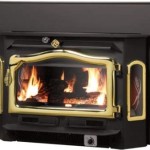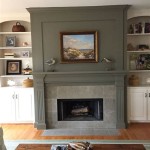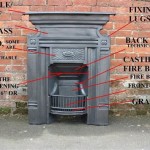Understanding Gas Fireplace Remote Control Switches
Gas fireplaces offer a convenient and aesthetically pleasing alternative to traditional wood-burning fireplaces. A key component contributing to their ease of use is the remote control switch. This seemingly simple device facilitates ignition, flame adjustment, and often, complete shut-off of the fireplace from a distance, enhancing comfort and safety. This article will delve into the workings of gas fireplace remote control switches, exploring their types, functionalities, troubleshooting, and best practices for ensuring optimal performance and longevity.
The evolution of gas fireplace technology has seen significant advancements in remote control capabilities. Early models often featured basic on/off functionality, while modern systems integrate sophisticated features such as thermostat control, timer settings, and safety mechanisms. Understanding the specific type of remote control and its interaction with the fireplace's control valve is crucial for effective operation and maintenance.
Types of Gas Fireplace Remote Control Systems
Gas fireplace remote control systems can be broadly categorized into several types based on their communication method and functionality. Differentiating between these types is essential for selecting the appropriate replacement remote or troubleshooting issues.
Millivolt Systems: Millivolt systems are a common type of gas fireplace control system. These systems operate on a very low voltage, typically generated by a thermopile. The thermopile is heated by the pilot light and generates a small electrical current that powers the gas valve. Remote controls for millivolt systems often function as simple on/off switches. When the remote's button is pressed, it completes the circuit, allowing the millivolt current to flow and open the gas valve. The simplicity of these systems contributes to their reliability and longevity. Because they are self-powered, they can continue to function during a power outage. The remote usually interacts with a receiver unit located within or near the fireplace. The receiver mimics the action of manually turning the fireplace on or off.
Electronic Ignition Systems: Electronic ignition systems utilize an electronic control module and a spark igniter to light the pilot light or main burner. These systems require a power source, typically 120V AC, although some may use batteries as a backup. Remote controls for electronic ignition systems often offer more advanced features, such as thermostat control and flame height adjustment. The remote communicates with the electronic control module, which then regulates the gas valve and igniter. These systems typically incorporate safety features like flame sensors, which shut off the gas supply if the flame is extinguished. These flame sensors add an additional layer of security, preventing gas leaks in the event of a flameout.
Standing Pilot Systems: Although less common in newer installations, standing pilot systems maintain a continuously burning pilot light. These systems are similar to millivolt systems in their operational principles but may have simpler remote control functionalities. The remote typically controls a solenoid valve that allows gas to flow to the main burner when activated. These systems are simpler to operate but are generally less energy-efficient due to the continuous gas consumption of the pilot light. Maintaining a clean pilot light is crucial for the reliable operation of these systems.
Direct Spark Ignition (DSI) Systems: DSI systems utilize an electronic control module to generate a spark directly at the main burner, eliminating the need for a pilot light. These systems are more energy-efficient than standing pilot systems and offer faster ignition. The remote control for a DSI system communicates with the electronic control module, which controls the spark igniter and gas valve. These systems often incorporate advanced safety features and diagnostic capabilities. The control module monitors the ignition process and will shut off the gas supply if ignition is not detected within a specified timeframe.
Understanding the specific type of control system installed in the fireplace is paramount for selecting the correct remote control and understanding its functionalities. The fireplace's documentation or a qualified HVAC technician can readily identify the system type.
Functionality and Features of Remote Control Switches
Gas fireplace remote control switches offer a range of functionalities beyond simple on/off control. The specific features available depend on the type of system and the sophistication of the remote control unit. Modern remote controls often incorporate advanced features designed to enhance user convenience and safety.
Basic On/Off Control: The most fundamental function of a gas fireplace remote control is the ability to turn the fireplace on and off from a distance. This is particularly useful for individuals with mobility issues or for adjusting the fireplace without needing to get up from a seated position. The remote sends a signal to the receiver unit, which then activates or deactivates the gas valve.
Thermostat Control: Many remote controls include thermostat capabilities, allowing the user to set a desired room temperature. The remote communicates with the fireplace's control system, which then modulates the flame height to maintain the set temperature. This feature enhances comfort and energy efficiency by preventing the fireplace from overheating the room. Some systems even incorporate learning algorithms that adapt to the room's heating characteristics over time, further optimizing energy consumption.
Flame Height Adjustment: Some remote controls allow the user to adjust the flame height of the fireplace. This feature provides greater control over the amount of heat produced and the visual appeal of the flame. The remote sends a signal to the gas valve, which then adjusts the gas flow to the burner. This functionality is particularly useful for managing the room's temperature and ambience.
Timer Function: Many remote controls include a timer function, allowing the user to set a specific time for the fireplace to turn on or off. This feature is useful for preheating a room before arrival or for automatically turning off the fireplace after a set period. The timer function contributes to energy savings and enhances convenience.
Safety Features: Advanced remote control systems often integrate safety features, such as child lock functions and automatic shut-off mechanisms. The child lock prevents unauthorized operation of the fireplace, while the automatic shut-off feature turns off the fireplace after a certain period of inactivity or in the event of a malfunction. These safety features are crucial for preventing accidents and ensuring safe operation of the fireplace.
Diagnostic Capabilities: Some advanced systems include diagnostic capabilities that can identify potential problems with the fireplace. The remote may display error codes or other information that can help troubleshoot issues. This feature can save time and money by allowing the user to identify and address problems before they escalate.
The specific functionalities of a remote control switch vary depending on the model and manufacturer. Consulting the user manual is essential for understanding the features and operating instructions of the specific remote control unit.
Troubleshooting and Maintenance of Remote Control Switches
Gas fireplace remote control switches, like any electronic device, can experience malfunctions or require maintenance. Understanding common issues and troubleshooting steps is crucial for ensuring reliable operation.
Battery Issues: The most common problem with remote control switches is battery depletion. Replacing the batteries with fresh ones is often the first and simplest solution. It is important to use the correct type of battery as specified in the user manual. Low batteries can cause intermittent operation or complete failure of the remote control.
Signal Interference: Radio frequency (RF) interference from other electronic devices can disrupt the communication between the remote control and the receiver unit. Try moving other electronic devices away from the fireplace or receiver unit to reduce interference. Other potential sources of interference include cordless phones, Wi-Fi routers, and microwave ovens. Changing the channel or frequency of the remote control system, if possible, may also help.
Receiver Unit Problems: The receiver unit, typically located within or near the fireplace, can also experience malfunctions. Check the connections between the receiver unit and the fireplace's control system. Ensure that the wiring is secure and that there are no loose connections. If the receiver unit is powered by an external power supply, check the power supply to ensure that it is functioning correctly. Damage to the receiver unit may require replacement.
Pilot Light Issues: In systems with a standing pilot light, a malfunctioning pilot light can prevent the remote control from turning on the main burner. Ensure that the pilot light is clean and properly adjusted. A dirty or improperly adjusted pilot light may not generate enough heat to power the thermopile in millivolt systems. Cleaning the pilot light assembly and adjusting the pilot light flame may resolve the issue.
Gas Valve Problems: A malfunctioning gas valve can also prevent the remote control from operating the fireplace. Check the gas valve to ensure that it is functioning correctly. If the gas valve is not opening or closing properly, it may need to be repaired or replaced. This task should be performed by a qualified HVAC technician.
Remote Control Malfunctions: The remote control itself can experience malfunctions due to physical damage, water damage, or electronic component failure. Inspect the remote control for any signs of damage. If the remote control is damaged, it may need to be replaced. Replacing the remote control requires identifying the correct model number and ensuring compatibility with the fireplace's control system.
Regular maintenance, such as cleaning the remote control and receiver unit, can help prevent problems and extend the lifespan of the system. Avoid exposing the remote control to extreme temperatures or humidity. Store the remote control in a safe place when not in use.
If troubleshooting steps do not resolve the issue, it is recommended to consult with a qualified HVAC technician. Attempting to repair complex components without proper knowledge and experience can be dangerous.
By carefully understanding the type of gas fireplace remote control system, its functionalities, and common troubleshooting steps, users can ensure the safe and efficient operation of their gas fireplaces.

Skytech 1001d Wireless Wall Mounted On Off Fireplace Remote Control

Gas Fireplace Remote Control Guide Fireplaces Direct Learning Center

Skytech Tm R 2 Wireless Wall Mounted Timer Fireplace Remote Control

Gas Fireplace Remote Control Guide Fireplaces Direct Learning Center

Durablow Tr1001 Gas Fire Fireplace Remote Control Kit For Millivolt Valve Ipi Module Replaces Wall Switch On Off Ca

Skytech 1001th Thermostat Fireplace Remote Control

Durablow Tr1003 Gas Fire Fireplace On Off Remote Control Kit Thermostat Timer For Millivolt Valve Ipi Module Replaces Wall Switch Or Ca

How To Fix Your Everwarm Fireplace Remote Ew4001th

Skytech Controls 1001 A On Off Battery Powered Remote Control

Dropship Durablow Tr1001 Gas Fire Fireplace Remote Control Kit For Millivolt Valve Ipi Module Replaces Wall Switch On Off To At A Lower Doba
Related Posts








